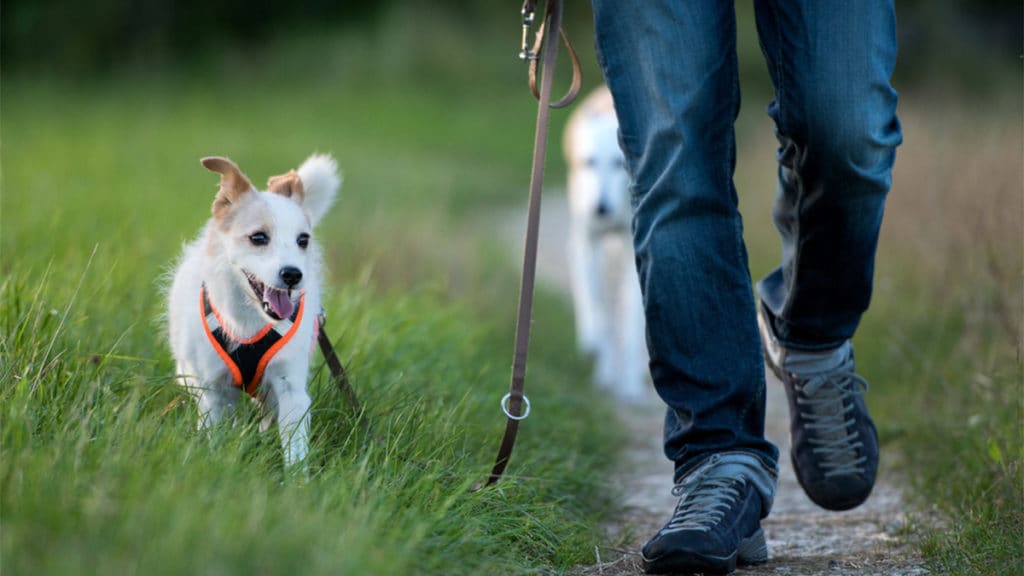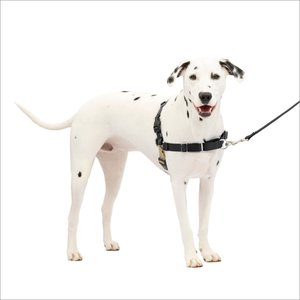Every dog needs a dog collar, but not all dogs need the same collar. To choose the right dog collar for your pal, consider her size as well as her primary activities. For instance, an active dog calls for a different kind of collar than a mellower pup.
Fit First
Dog collars come in different lengths to accommodate neck and head sizes for different breeds. For instance, a Greyhound is a large dog, but has a small, narrow head. It may require a different size than, say, a German Shepherd. Use your pet’s neck as a guide for choosing the right size. Make sure the collar isn’t too tight so that it doesn’t choke your dog. A dog collar that is too loose is also a problem, because your dog can slip right out and into traffic. If you can fit two fingers underneath, you’ve got the proper fit.
Materials Matter
The most common dog leash material is nylon, though owners might also choose other fabrics like leather, metal chain, hemp or even rope.
Leather tends to cost a bit more, but can be an attractive option. The fabric will require conditioning treatment to keep it from drying out and cracking. Leather is also a particularly good option for dogs with longer hair, to keep the hair from matting. A quality leather collar can last the life of your dog if cared for properly.
While not as polished looking as leather, nylon collars are a great choice for active dogs, especially ones who love water, as the material is less vulnerable to the elements. Nylon collars can be cleaned easily with soap and water, but may fray and require more frequent replacement.
Additional Features
You may notice dog collars with a lot of different features, from chest-and-shoulder harnesses to the adjustable-while-wearing martingale and more. Does your dog need these extras? It depends.
The common flat-buckle collar is a good option for most dogs, though you may want to consider a harness for a small, delicate dog with a sensitive neck, because flat-buckle collars can harm their trachea if jerked sharply.
A harness fits around the dog’s chest and ribcage and is an especially good option for dogs with large necks relative to their heads, because they can slip out of flat-buckle collars easily.
A martingale collar is also good for dogs with small heads like Greyhounds, who can slip out of standard dog collars, and for strong dogs that pull away a lot. The martingale collar has a loop that connects two ends of a flat collar. Pulling on the loop will cause the collar to tighten the ends of the flat collar.
A head collar fits a dog similar to the way a harness fits on a horse. This type of collar is a good option for excitable dogs that pull a lot, risking damage to their throats.
A bark-control collar is good for the overly talkative types. Bark collars send a mild static correction to discourage barking. This is not an electric shock, but a feeling similar to when you walk across carpet and then touch a metal doorknob. A vibrating collar is useful for a hearing-impaired pet, and GPS-tracker collars use global positioning satellite technology to help locate a lost pet—a particularly good choice for pups who like to wander.
Leashes
Pet parents also have tons of leash options. The two main categories to choose from are standard or retractable.
Standard
Standard dog leashes are a set length and come in a variety of colors and fabrics, most commonly, leather and nylon. Some things you’ll want to consider when choosing a leash include the size of your pet and her leash-walking tendencies. Small dogs will do better with a lightweight nylon leash, but you might want a heavier leather leash for larger breeds.
Retractable
Retractable leashes generally have a large plastic handle from which a nylon cord may be released and retracted to control the distance your dog is able to travel away from you. The retractable dog leash works well for giving your dog a little more room to roam in a public place such as a park.
If your dog tends to lunge, a standard no-pull leash or a bungee leash can do wonders. These dog leashes use innovative designs to reduce pressure around the collar and neck. Some wrap around the torso instead, and others use a bungee to minimize strain for you and your dog.
Share:














